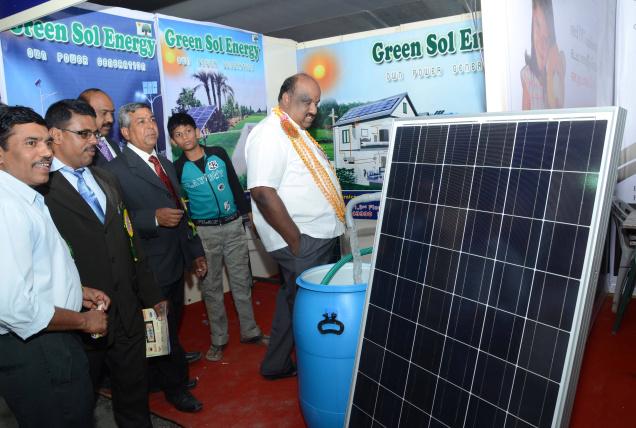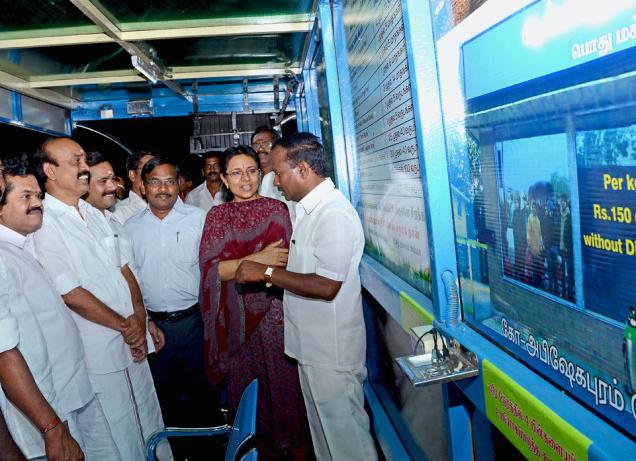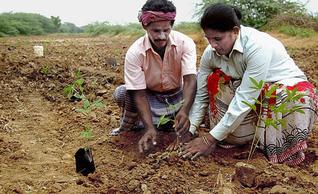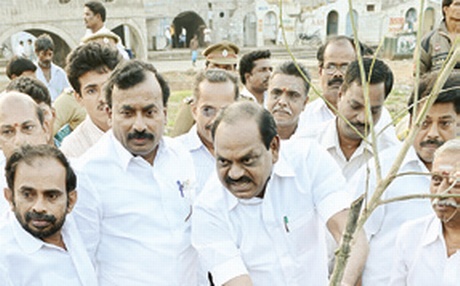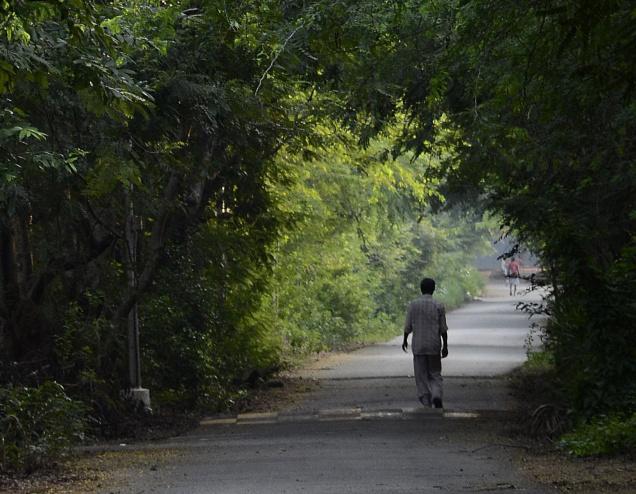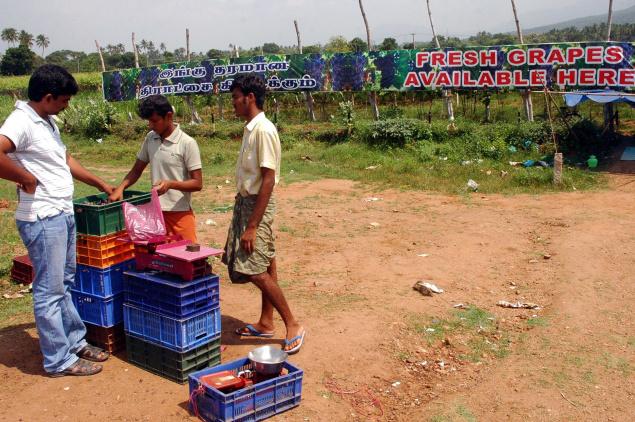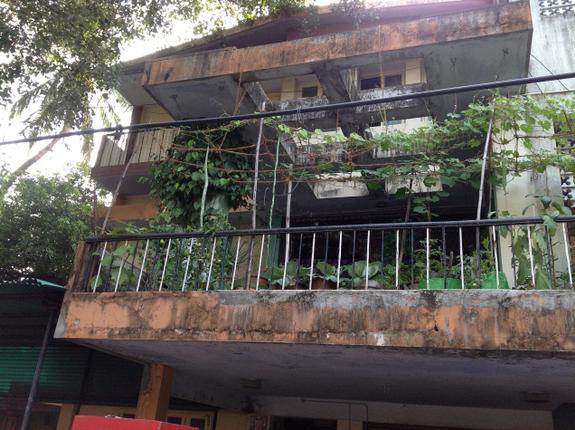Mu.Mohan, State chairman, Tamil Nadu and Puducherry Builders’ Association of India, visiting a stall at Buildrock-2012 exhibition in the city on Tuesday. / Photo: R.M. Rajarathinam / The Hindu
The exhibitors believe that in the backdrop of power shortage, people will give a serious thought to making purposeful investments
For those contemplating solar power for homes, commercial buildings and industrial establishments, all roads should lead to Buildrock 2012 exhibition presented by Builders` Association of India at the grounds of Dhanalakshmi Srinivasan School near Karur Bypass Road.
The exhibition featuring various other aspects of home right from electrical, flooring, pipes, roofing, water heating and storage, plywood doors and interior decoration promises to serve as a one stop spot for keen planning and budgeting prior to commencing construction.
In the backdrop of power shortage and indications that the situation may not turn to normal for at least the next couple of years, the exhibitors of solar energy products believe that constructors will give a serious thought to make purposeful investments.
Solar panels of various sizes along with their power generation capacities are on display. Realtors and builders of residential apartments have also sought to make their presence felt.
According to J.Sankaran, chairman, Buildrock, about 50 per cent of the 66 exhibits at Buildrock 2012 showcase new products.
Be it aluminium coated galvanised sheets or low-weight concrete blocks with higher sturdiness and efficiency, visitors will be quick to learn the advantages of the products, organisers promise.
State Chairman, Tamil Nadu and Puducherry Builders’ Association of India, Mu Mohan inaugurated the exhibition in the presence of Chairman of Tiruchi Chapter Jawagar and Secretary M.Thirusangu.
From the perspective of consumers, the exhibition is being organised at a time when there are price fluctuations in the cost of construction materials. The exhibition will be kept open for public until December 30.
source: http://www.TheHindu.com / Home> News> Cities> Tiruchirapalli / by Special Correspondent / december 26th, 2012
